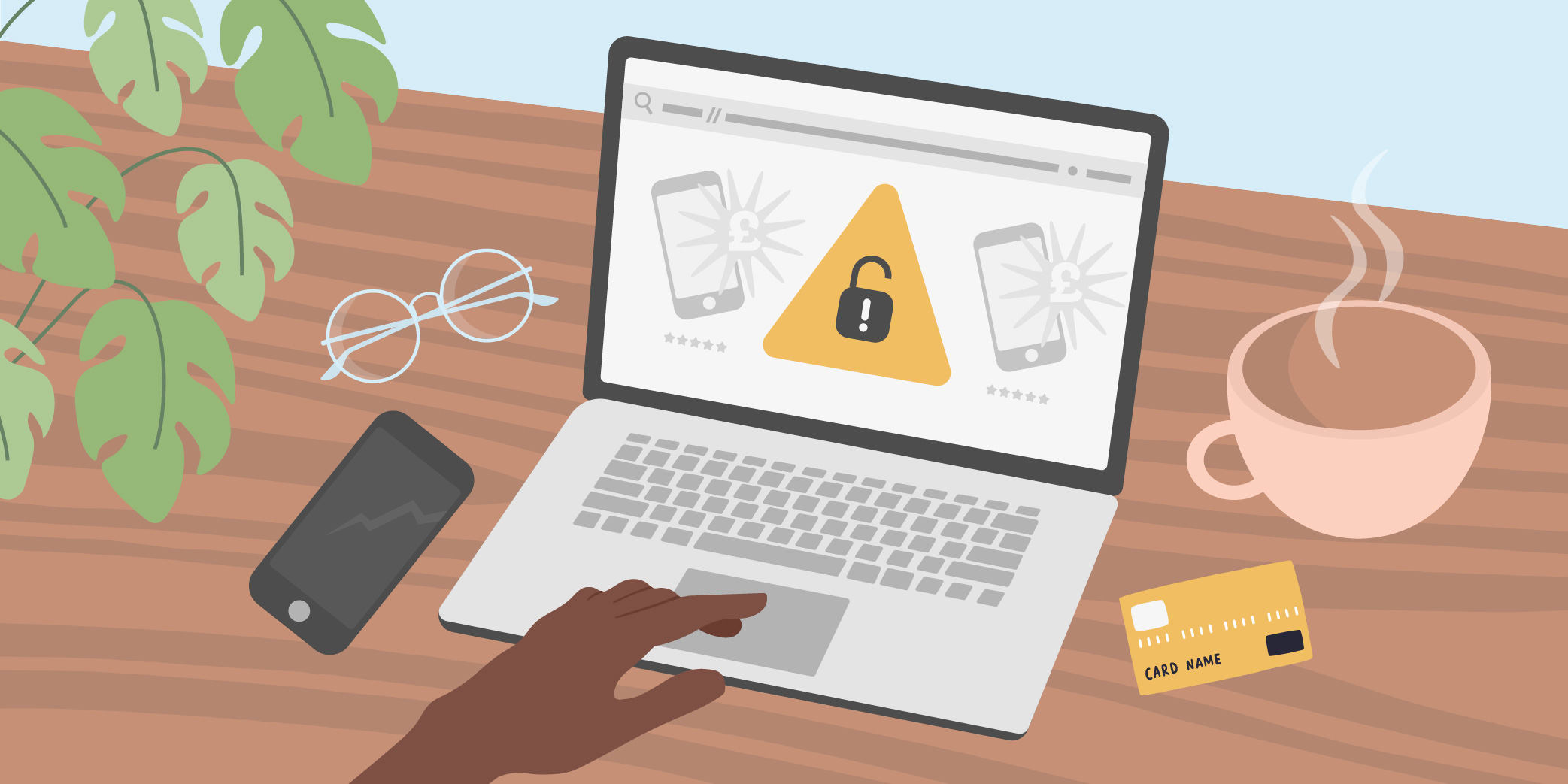Hello!
The emergence of fraudulent websites is an unsettling fact we must deal with as soon as possible, as procrastination can be damaging, even more than expected.
As we now find ourselves in a world where the internet is becoming more and more important, there is hardly a day without having anything to do with the internet. This makes us more at risk of falling victim, even as business owners.
But have you ever wondered what the law has to say about it? Perhaps you think that the law is silent on the matter. Definitely not. The law is not just about spotting these imposters; there’s a whole legal labyrinth to navigate when it comes to taking them down.
 From copyright infringement to identity theft and from defamation to cyber fraud, the legal aspects are diverse and complex. Let’s seize this time to look into the legal aspect of taking a fake website.
From copyright infringement to identity theft and from defamation to cyber fraud, the legal aspects are diverse and complex. Let’s seize this time to look into the legal aspect of taking a fake website.
How to Identify Fake Website
Referencing an article written by Statista, about 41 billion U.S. dollars was lost by e-commerce globally in 2022 to online payment fraud, and the figure is not expected to slow down anytime soon.
Thousands of fake websites are being given birth to every day by bunches of clever criminals, and this is making it tough for businesses to survive as they are now unwillingly subjected to the mercy of criminals.
For business owners most importantly, now is the time to bear the responsibility for protecting their customer’s sensitive data from the wicked hands of the fraudsters and also to protect their own business brands image or legacy, and also to avoid financial loss.
 That being said, let us look into how to recognize the bad websites:
That being said, let us look into how to recognize the bad websites:
- Check the URL: Often, fake websites use a domain name that closely resembles the legitimate one but with minor spelling changes or additional characters.
- Look for HTTPS: Legitimate websites typically use HTTPS to encrypt users’ data for security. If the website only has HTTP, it’s a red flag.
- Examine the content: Poor grammar, misspellings, low-resolution images, or outdated information could signal a fake website.
- Check the contact information: Fake websites often lack real contact information. If the website has a contact section, try reaching out to confirm its legitimacy.
- Use online tools: There are online tools to trust that can inform you and protect your business from the hands of criminals.
- Check reviews and online reputation: Search for reviews or complaints about the website. If there are many negative reviews or none at all, it could indicate a scam.
Basics of Combating Counterfeit Websites
Let’s start by explaining briefly what a fake website is. Simply put, they are illegitimate websites that mimic legitimate ones to deceive users into sharing sensitive information or making fraudulent purchases.
 These sites typically steal content, logos, and graphics from real websites to appear authentic. In the worst case, they are capable of stealing people’s sensitive information, such as credit card numbers, social security numbers, and other personal information, to carry out identity theft.
These sites typically steal content, logos, and graphics from real websites to appear authentic. In the worst case, they are capable of stealing people’s sensitive information, such as credit card numbers, social security numbers, and other personal information, to carry out identity theft.
Since the impact of this fraudulent act does no good to businesses and individuals as the victims of this act are bound to suffer a huge loss of money, jeopardize and tarnish their brand image as business owners this time around, and can have legal repercussions.
Businesses need to be well-versed in the legal procedure for removing counterfeit websites in order to effectively combat them.
However, before jumping into taking legal action to tackle the fraudsters and protect your brand’s image and innocent customers, it’s necessary that one is familiar with the legal aspect that majorly focuses on combating issues related to counterfeit online platforms and knowing the procedure of how to report a website and remove them will be a plus.
Businesses can take decisive action against these fraudulent online platforms by using the legal remedies available to them and addressing the legal ramifications of taking down copycat sites.
The battle against fraudulent websites can be strengthened by putting robust cybersecurity measures into place and making use of online monitoring technologies.
Legal Perspective on Taking Down Fake Websites
The question now is, so, what’s being done about it from a legal perspective? Well, let’s say various laws address different aspects of taking down counterfeit websites. Here are some of the key ones:
Copyright Infringement
 Copyright law protects original creative works like images, logos, and written content. So, if a fake website copies any copyrighted material without permission or proper attribution, it can be taken down using copyright infringement claims.
Copyright law protects original creative works like images, logos, and written content. So, if a fake website copies any copyrighted material without permission or proper attribution, it can be taken down using copyright infringement claims.
Identity Theft
Identity theft is one of the most common forms of online fraud. If a fake website is using someone else’s identity or personal information without their consent, it can be taken down under identity theft laws.
Trademark Infringement
Trademark law protects brand names and logos. So, if a fake website sells counterfeit goods using another company’s trademark, it can be taken down using trademark infringement claims.
Consumer Protection Laws
Many countries, like the US, have consumer protection laws that prevent businesses from engaging in deceptive practices. If a fake website is falsely advertising products or services, it can be taken down under these laws.
Cybercrime Laws
Some countries have specific cybercrime laws that make it illegal to create and operate fake websites for malicious purposes. These laws allow authorities to take down such websites and prosecute their creators.
In addition, other laws in place protect us from these fraudulent activities and provide the legal grounds to take action against such websites.
 One of the most common laws used to combat fake websites is the Anticybersquatting Consumer Protection Act (ACPA). What these laws do is to protect anyone against registering or using domain names that are identical or confusingly similar to existing trademarks with an intent to profit from them. It enables trademark owners to take down infringing domains and receive damages for any harm caused.
One of the most common laws used to combat fake websites is the Anticybersquatting Consumer Protection Act (ACPA). What these laws do is to protect anyone against registering or using domain names that are identical or confusingly similar to existing trademarks with an intent to profit from them. It enables trademark owners to take down infringing domains and receive damages for any harm caused.
Similarly, the Digital Millennium Copyright Act (DMCA) works by providing a mechanism for copyright holders to request the removal of content from websites that infringe on their copyrights. This can be used against fake websites that use copyrighted material without permission.
Some countries also have laws specifically aimed at combating online fraud and scams. For example, in the United Kingdom, the Fraud Act 2006 makes it a criminal offense to commit fraud by false representation or failing to disclose information with intent to make a gain or cause loss to another.
Legal Steps of Taking Down Fake Websites
Perhaps your company is a victim of a fake website and thinking about what steps to take legally to fight for what belongs to your company; kindly follow the steps one after the other.
Identify Ownership
 The first step to taking action against a fake website is to identify who owns the website. This can be done using “WHOIS” databases, which are publicly accessible and contain information about the registered owners of domain names.
The first step to taking action against a fake website is to identify who owns the website. This can be done using “WHOIS” databases, which are publicly accessible and contain information about the registered owners of domain names.
Gather Evidence
Next, gather all the evidence you can about the fraudulent activities of the website. This can include screenshots, saved web pages, email correspondence, and other forms of evidence you have access to.
Consult a Legal Expert
Once you’ve gathered your evidence, consult with a legal expert who specializes in Internet law. They will take it up from there and help you through the process, and even advise you on the best course of action. However, you have to be prepared to pay for their services.
Issue a Cease and Desist Letter
 Your legal expert may recommend sending a cease and desist letter to the website owner. This is a formal notice requesting that they stop their illegal activities.
Your legal expert may recommend sending a cease and desist letter to the website owner. This is a formal notice requesting that they stop their illegal activities.
File a Legal Suit
If the website does not comply with the cease and desist notice, you may need to file a legal suit against them. However, this suit could be for copyright infringement, trademark infringement, identity theft, violation of consumer protection laws, or cybercrime, depending on the nature of the fake website’s activities.
Report to Hosting Provider
You can also report the fraudulent website to its hosting provider. Most providers have policies prohibiting illegal activities on websites they host, and they may take down the website if they find it violating these policies.
Report to Search Engines
 Reporting the fake website to search engines like Google can also be an effective step. If the search engine determines the website is fraudulent, they may de-index it, making it harder for people to find.
Reporting the fake website to search engines like Google can also be an effective step. If the search engine determines the website is fraudulent, they may de-index it, making it harder for people to find.
Report to Local or Federal Authorities
In addition to the steps above, it’s important to report the fraudulent website to your local or federal authorities. They may have the power to take down the website and prosecute the owners.
Wrapping Up
There you have it about the legal aspects of taking down fake websites. We believe the information provided above meets your present need and want. A fake website is like a bean weevil eating away the good part of the beans.
Every necessary action should be taken to combat it once and for all. By doing so, in no time, your business will be safe and free from the hands of the criminals.
Thank you!
Join us on social media!
See you!






